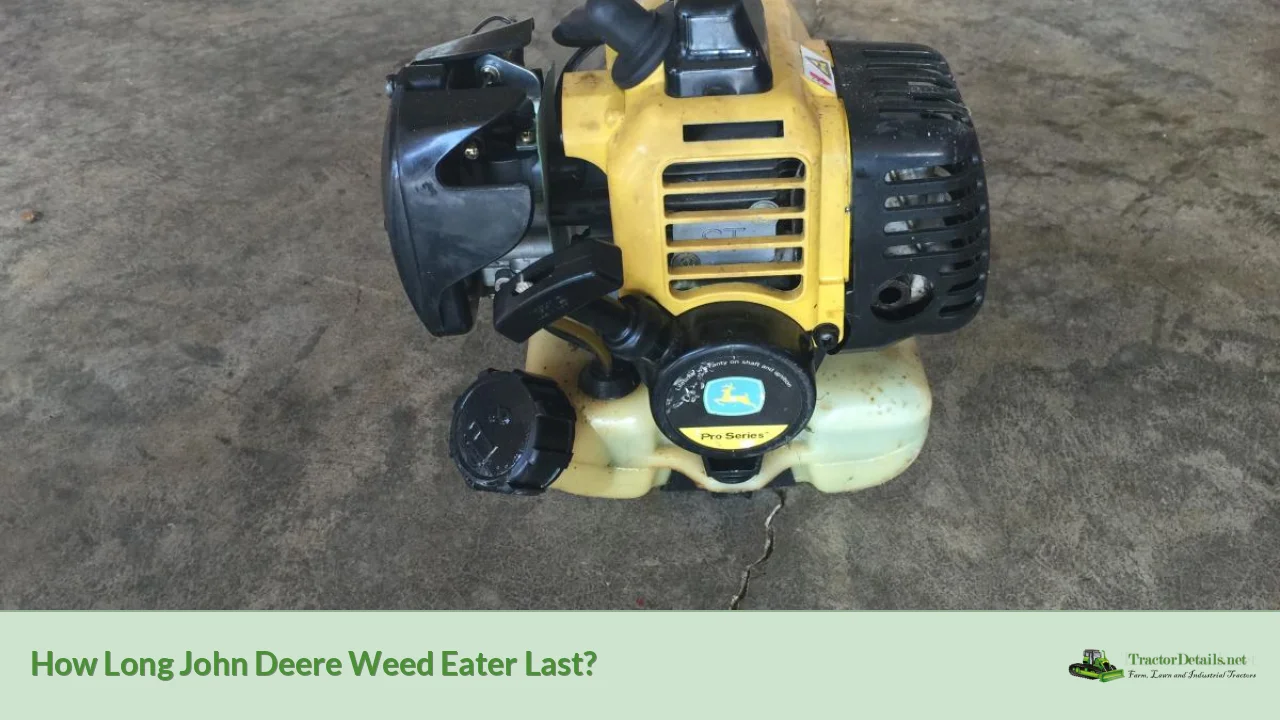John Deere weed eaters, like many other brands of string trimmers, have varying lifespans depending on several factors. These include the model, how often they are used, and the maintenance practices employed by the user. Generally, a well-maintained John Deere weed eater can last anywhere from 5 to 10 years or more. However, this lifespan can be significantly influenced by the type of fuel used, the operating conditions, and adherence to maintenance schedules.
The average lifespan of a weed eater is often discussed in terms of hours of operation. For instance, many users report that gas-powered models can last around 200 to 300 hours of use before significant issues arise. This translates to several years for typical homeowners who use their equipment seasonally. In contrast, commercial users who operate their equipment more frequently may find that they need to replace their trimmers every few years due to higher wear and tear.
To ensure longevity, it is essential to perform regular maintenance, including oil changes, air filter replacements, and spark plug inspections. Proper storage practices during off-seasons also play a crucial role in extending the life of your equipment.
| Factor | Impact on Lifespan |
|---|---|
| Usage Frequency | Higher usage leads to faster wear. |
| Maintenance | Regular maintenance extends lifespan significantly. |
Factors Affecting Lifespan
Several factors can influence how long a John Deere weed eater will last. Understanding these can help users make informed decisions about usage and maintenance.
Usage Frequency
The frequency with which you use your weed eater directly impacts its lifespan. For homeowners who use their trimmers occasionally—perhaps for seasonal yard work—lifespan can be extended significantly. Conversely, commercial landscapers who use their equipment daily may find that their machines wear out more quickly due to constant use.
Maintenance Practices
Regular maintenance is crucial for extending the life of any power tool, including weed eaters. This includes:
- Changing the oil regularly
- Replacing air filters as needed
- Checking and replacing spark plugs
- Cleaning the trimmer after each use to prevent debris buildup
Neglecting these tasks can lead to engine issues and reduced performance over time.
Type of Fuel Used
Using the correct type of fuel is vital for maintaining your weed eater's health. Gas-powered models typically require a specific fuel mix (often a blend of gasoline and oil). Using incorrect fuel can lead to engine damage and reduced lifespan.
Storage Conditions
How you store your weed eater during off-seasons also affects its longevity. Keeping it in a dry place away from extreme temperatures can prevent rust and other forms of damage. Additionally, properly draining fuel before long-term storage can prevent issues related to stale fuel.
Common Issues and Repairs
As with any mechanical device, John Deere weed eaters may experience problems over time. Understanding common issues can help users address them promptly before they lead to more significant repairs.
Engine Problems
Engine issues are among the most common problems reported by users. Symptoms may include difficulty starting or stalling during operation. These problems are often related to fuel quality or spark plug condition.
String Feed Issues
Many users report problems with the automatic string feed mechanism not working correctly. This can lead to frustration during operation as users may need to stop frequently to adjust or replace the string manually.
Wear on Moving Parts
Over time, moving parts such as gears and bearings may wear out due to friction and heat. Regular lubrication and inspection can help mitigate these issues but expect some wear if the trimmer is used frequently.
Tips for Extending Lifespan
To maximize the lifespan of your John Deere weed eater, consider implementing these practical tips:
- Regular Maintenance: Follow a consistent schedule for oil changes, air filter replacements, and spark plug checks.
- Proper Fuel Use: Always use the recommended fuel mixture as specified in your user manual.
- Clean After Use: Clean your trimmer after each use to remove grass clippings and dirt that could cause corrosion or mechanical problems.
- Store Properly: Store your equipment in a dry place during off-seasons and consider using a protective cover.
- Inspect Regularly: Conduct regular inspections for any signs of wear or damage that could lead to bigger issues down the line.
FAQs About How Long John Deere Weed Eater Last
- What is the average lifespan of a John Deere weed eater?
The average lifespan is typically between 5 to 10 years with proper maintenance. - How often should I perform maintenance on my weed eater?
Regular maintenance should be performed at least once per season or after every 25 hours of use. - Can I extend my weed eater's life?
Yes, through regular maintenance and proper storage practices. - What common issues should I look for?
Look for engine problems, string feed issues, and wear on moving parts. - How do I know when it's time to replace my weed eater?
If you experience frequent breakdowns or repairs that exceed half the cost of a new unit, it may be time for replacement.
By understanding these factors and implementing good practices, users can ensure that their John Deere weed eaters provide reliable service for many years. Regular attention to maintenance not only enhances performance but also contributes to a longer lifespan, making it a worthwhile investment for both homeowners and professionals alike.
